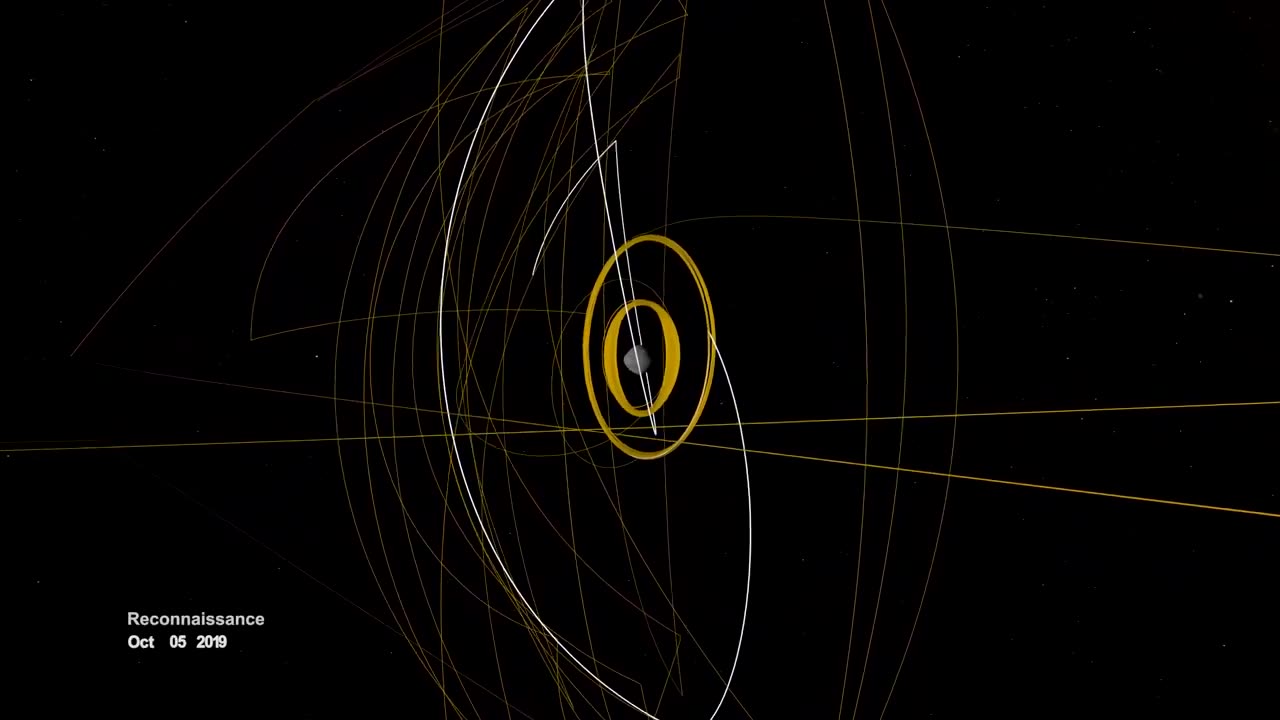Premium Only Content

"OSIRIS-REx Successfully Deploys Orbital Web Around Asteroid for Sample Capture
OSIRIS-REx Slings Orbital Web Around Asteroid to Capture Sample
The OSIRIS-REx spacecraft utilized its TAGSAM arm to make contact with the asteroid Bennu's surface, collecting a sample of material. It then departed the asteroid's vicinity and established a safe distance. The spacecraft didn't exactly create an "orbital web," but it did perform a series of maneuvers around the asteroid. These actions allowed it to analyze and secure the collected sample for a return mission to Earth.
NASA's OSIRIS-REx mission, launched in 2016, achieved a remarkable feat in its mission to study and collect samples from the near-Earth asteroid Bennu. This mission marked a historic moment in space exploration as it employed a creative and innovative technique to capture a sample from an asteroid's surface.
Upon reaching Bennu in December 2018, OSIRIS-REx began an intricate dance with the asteroid. The spacecraft carefully mapped Bennu's surface, analyzing its topography and composition to identify the best possible site to collect a sample. What set this mission apart was the unique method devised to retrieve the sample – the Touch-And-Go (TAG) maneuver.
The TAG maneuver was a complex operation that involved multiple steps. First, the spacecraft executed a carefully planned series of thruster burns to descend towards the asteroid's surface. As it got closer, it extended its robotic arm, called the Touch-And-Go Sample Acquisition Mechanism (TAGSAM), which resembled an articulated arm with a circular sampling head at its end. This head was designed to touch the surface for just a few seconds to gather regolith, the loose soil and rocks covering the asteroid.
The challenge, however, was that Bennu's surface was far from smooth. It was covered in boulders and rugged terrain, making the selection of a suitable sampling site crucial. To aid in this, OSIRIS-REx conducted a "Reconnaissance A" phase, during which the spacecraft made a close flyover of Bennu's surface, capturing high-resolution images and data to refine the sampling strategy.
Once the ideal site, designated Nightingale, was selected, OSIRIS-REx began its descent. The spacecraft's thrusters kicked up a cloud of regolith upon touchdown, and as the sampling head made contact with the surface, a burst of nitrogen gas was released to stir up and capture the ejected material. The spacecraft then backed away, successfully acquiring its precious sample.
The sample collection was a momentous achievement, but the mission didn't stop there. OSIRIS-REx had to prove that it had indeed collected enough material. The spacecraft's onboard cameras documented the sample head and its interior, showing the collected regolith. To ensure that a sufficient sample was obtained, the TAGSAM head was carefully stowed in a sample return capsule within the spacecraft.
In April 2021, OSIRIS-REx began its journey back to Earth, with the sample return capsule safely stored within its body. The spacecraft executed a series of maneuvers to align its trajectory for re-entry into Earth's atmosphere. The capsule, containing the precious asteroid sample, was eventually dropped from the spacecraft and landed in the Utah desert in September 2023.
The sample collected from Bennu has the potential to provide valuable insights into the early solar system's composition and the origins of life on Earth. It's hoped that the pristine regolith could hold clues about the building blocks of planets and the delivery of water and organic materials to our planet.
In summary, the OSIRIS-REx mission's slinging of an orbital web around the asteroid Bennu was a remarkable achievement in space exploration. The successful execution of the TAG maneuver and the safe return of the sample to Earth underscored humanity's capacity for innovation and exploration, pushing the boundaries of what's possible in our quest to unravel the mysteries of the cosmos.
-
 13:05
13:05
Mike Rowe
4 days agoIs College DEAD? Inside America’s #1 Trade School | Sheree Utash From #448 | The Way I Heard It
58.8K21 -

FreshandFit
3 hours agoAyesha Curry Never Wanted Steph Curry
57.6K6 -
 23:28
23:28
DeVory Darkins
8 hours ago $8.21 earnedTrump official ANNIHILATES Democrats in heated debate as CNN gets caught sympathizing with criminals
16.3K54 -
 1:02:26
1:02:26
The Nick DiPaolo Show Channel
10 hours agoPOC Murders Another White Woman | The Nick Di Paolo Show #1790
54.2K58 -
 2:04:29
2:04:29
Inverted World Live
6 hours agoNew UFO Hearing Testimony: Lockheed Martin Has Alien Technology | Ep. 105
65.3K8 -
 LIVE
LIVE
Akademiks
4 hours agoYNW Melly MIGHT BE COOKED! Co-D TELLLING? 6ix9ine vs Young Thug . Drake vs Kaicenat? HOLLY
1,224 watching -

Drew Hernandez
11 hours agoHORRIFYING: FULL FOOTAGE OF IRYNA ZARUTSKA MURDER HAS BEEN RELEASED
30.9K23 -
 2:42:09
2:42:09
TimcastIRL
6 hours agoNATO Scramble Air Force Over Russian Incursion Into Poland, HIGH ALERT Reported | Timcast IRL
178K97 -
 25:46
25:46
Man in America
10 hours agoALERT: Gold Prices FLASH OMINOUS WARNING for the Dollar—Are You READY??
28.8K17 -
 58:27
58:27
Sarah Westall
6 hours agoWar Exploding Around the World: Nepal, Israel, Qatar, Venezuela, Thailand, more... w/ Michael Yon
35.9K12